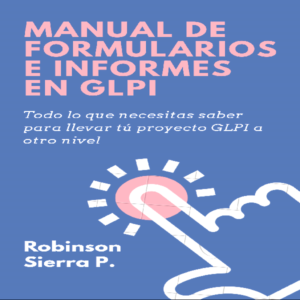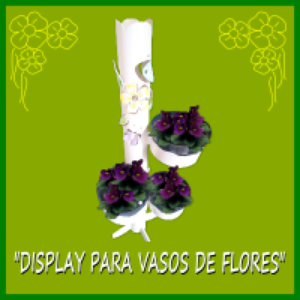In writing this book my main purpose is to set forth a way of thinking about art. The most that such a book can do is to direct the thoughts, awaken a sense of power and point to ways of controlling it.
The principles of art teaching here outlined might be illustrated in other ways and with better examples. I hope the reader will see how each chapter can be developed into many sets of lessons. The progressions can be varied, materials changed, lessons amplified and different designs chosen, providing there is no sacrifice of essentials. The book is based upon my experience in painting and teaching for more than twenty years. The first edition of Composition was published in 1899. In this revision I have made many additions and used new illustrations without departing from theory or principles. Composition was chosen as a title because that word expresses the idea upon which the method here presented is founded—the “putting together” of lines, masses and colors to make a harmony. Design, understood in its broad sense, is a better word, but popular usage has restricted it to decoration.
Composition, building up of harmony, is the fundamental process in all the fine arts. I hold that art should be approached through composition rather than through imitative drawing. The many different acts and processes combined in a work of art may be attacked and mastered one by one, and thereby a power gained to handle them unconsciously when they must be used together. If a few elements can be united harmoniously, a step has been taken toward further creation. Only through the appreciations does the composer recognize a harmony. Hence the effort to find art-structure resolves itself into a development of appreciation. This faculty is a common human possession but may remain inactive. A way must be found to lay hold upon it and cause it to grow. A natural method is that of exercises in progressive order, first building up very simple harmonies, then proceeding on to the highest forms of composition. Such a method of study includes all kinds of drawing, design and painting. It offers a means of training for the creative artist, for the teacher or for one who studies art for the sake of culture.
This approach to art through Structure is absolutely opposed to the time-honored approach through Imitation. For a great while we have been teaching art through imitation—of nature and the “historic styles”—leaving structure to take care of itself; gathering knowledge of facts but acquiring little power to use them. This is why so much modern painting is but picture-writing; only story-telling, not art; and so much architecture and decoration only dead copies of conventional motives. Good drawing results from trained judgment, not from the making of fac-similes or maps. Train the judgment, and ability to draw grows naturally. Schools that follow the imitative or academic way regard drawing as a preparation for design, whereas the very opposite is the logical order—design a preparation for drawing.
Soon after the time of Leonardo da Vinci art education was classified into Representative (imitative), and Decorative, with separate schools for each—a serious mistake which has resulted in loss of public appreciation. Painting, which is essentially a rhythmic harmony of colored spaces, became sculptural, an imitation of modelling. Decoration became trivial, a lifeless copying of styles. The true relation between design and representation was lost.
This error is long-lived. An infinite amount of time is wasted in misdirected effort because tradition has a strong hold, and because artists who have never made a study of education keep to old ruts when they teach.
The principles of art teaching here outlined might be illustrated in other ways and with better examples. I hope the reader will see how each chapter can be developed into many sets of lessons. The progressions can be varied, materials changed, lessons amplified and different designs chosen, providing there is no sacrifice of essentials. The book is based upon my experience in painting and teaching for more than twenty years. The first edition of Composition was published in 1899. In this revision I have made many additions and used new illustrations without departing from theory or principles. Composition was chosen as a title because that word expresses the idea upon which the method here presented is founded—the “putting together” of lines, masses and colors to make a harmony. Design, understood in its broad sense, is a better word, but popular usage has restricted it to decoration.
Composition, building up of harmony, is the fundamental process in all the fine arts. I hold that art should be approached through composition rather than through imitative drawing. The many different acts and processes combined in a work of art may be attacked and mastered one by one, and thereby a power gained to handle them unconsciously when they must be used together. If a few elements can be united harmoniously, a step has been taken toward further creation. Only through the appreciations does the composer recognize a harmony. Hence the effort to find art-structure resolves itself into a development of appreciation. This faculty is a common human possession but may remain inactive. A way must be found to lay hold upon it and cause it to grow. A natural method is that of exercises in progressive order, first building up very simple harmonies, then proceeding on to the highest forms of composition. Such a method of study includes all kinds of drawing, design and painting. It offers a means of training for the creative artist, for the teacher or for one who studies art for the sake of culture.
This approach to art through Structure is absolutely opposed to the time-honored approach through Imitation. For a great while we have been teaching art through imitation—of nature and the “historic styles”—leaving structure to take care of itself; gathering knowledge of facts but acquiring little power to use them. This is why so much modern painting is but picture-writing; only story-telling, not art; and so much architecture and decoration only dead copies of conventional motives. Good drawing results from trained judgment, not from the making of fac-similes or maps. Train the judgment, and ability to draw grows naturally. Schools that follow the imitative or academic way regard drawing as a preparation for design, whereas the very opposite is the logical order—design a preparation for drawing.
Soon after the time of Leonardo da Vinci art education was classified into Representative (imitative), and Decorative, with separate schools for each—a serious mistake which has resulted in loss of public appreciation. Painting, which is essentially a rhythmic harmony of colored spaces, became sculptural, an imitation of modelling. Decoration became trivial, a lifeless copying of styles. The true relation between design and representation was lost.
This error is long-lived. An infinite amount of time is wasted in misdirected effort because tradition has a strong hold, and because artists who have never made a study of education keep to old ruts when they teach.












